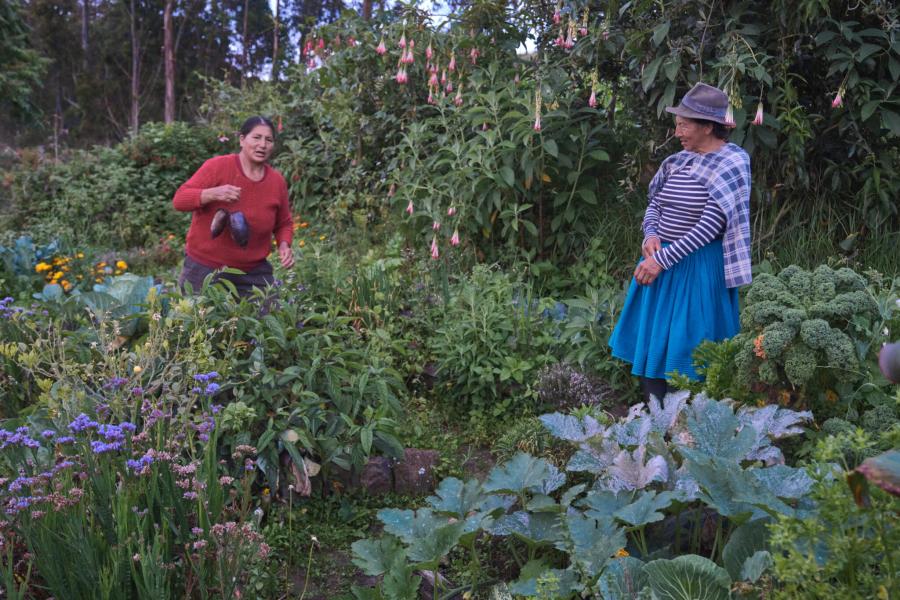The Inuit of Nunavik in Northern Quebec are no strangers to tragedy. With a population of slightly less than 12,000 in a region slightly larger than California, the Inuit of Nunavik have a suicide rate that is seven times higher than in the rest of Quebec. Youth under the age of 30 commit the vast majority of these suicides: for Inuit aged 20 to 24 the suicide rate is 23 times higher than the rest of the province; for Inuit aged 15 to 19 the suicide rate is 46 times higher.
“We couldn’t go past a few months without a suicide,” says Minnie Grey, an Inuit leader and activist from Kangirsuk, Nunavik, who has been particularly active in addressing the problem. “People were beside themselves. When a suicide happens it doesn’t have to be your friend, or your cousin, or your neighbor for you to be affected. When there is a tragedy in our community, each and every one of us is affected.”
Grey says the rates are so high because the Inuit have been through many enormous changes in a short time. “We’ve gone from living off the land as a nomadic hunting society to what we have today,” she says. “There is confusion. People wonder, ‘Am I white or am I Inuit?’ And then they think ‘I can’t be good at either.’ That ideology has become such a big influence in many people’s lives, especially the young people’s.”
When Grey began her job as the executive director of the Nunavik Health Center roughly a decade ago, she knew she had to do something to help her community heal from the scourge of suicide and to prevent future deaths. And she was particularly well qualified to do it. She has served as the vice president of the Makivik Corporation, which officially represents the Inuit of Nunavik, and was vice president of the Canadian office of the Inuit Circumpolar Conference. She also has served as the executive director of the Ungava Hospital and the chairperson of the Nunavik Nutrition and Health Committee. In addition, she has provided counsel for the Canadian Council of Learning and the United Nations Advisory Group to the Inuit Circumpolar Conference and has been the lead negotiator for Nunavik self-government since 2002 (90 percent of Nunavik’s people are Inuit, and they seek the same sort of autonomy within Quebec that the larger and better-known Nunavut territory won from Canada in 1999).
Grey’s goal was to bring the Nunavik community together to create culturally relevant responses to suicide and to provide a venue for people to express their feelings and concerns. To help that process, she created the Tapiriilirniq Committee. The committee conducted site visits throughout the region, meeting with elected officials and community leaders to discuss strategies for suicide prevention. Grey went out of her way to bring otherwise separated groups together during these meetings. “The most important part [of suicide prevention] is the involvement of everyone in the community,” Grey says. “So the Tapiriilirniq Committee consisted of front-line workers, elders, and youth. We talked about how we could approach the problem, how we could try to get people involved in prevention work, and we would help communities organize discussion groups and activities. We would welcome everyone.” In many communities, Grey hosted radio programs where callers could discuss their personal experiences with suicide or depression.
Grey believes that promoting such honest conversation helped to break the uncomfortable silence surrounding the problem of youth suicide. “In the past,” she says, “when bad things were happening, they were usually considered taboo. But people are becoming more vocal about these issues, and they are [realizing] that we have to talk about problems in order to find solutions. Silence kills us.” Thanks in great part to Grey’s commitment, today the Inuit community in Nunavik is more comfortable than ever discussing issues of suicide, depression, and the addiction that often accompanies it. More and more youth centers are cropping up across the region, and support services are increasingly ubiquitous. “Suicide has not been abolished,” Grey admits, “but there is less now. When a suicide happens it is still heart wrenching and we are all still very much affected, but there is more outreach now and there are more services being offered.” Today, the Nunavik community is, as Grey puts it, “promoting life through action.”
Grey’s unwavering commitment to the health and success of the Nunavik community stems from her childhood. As a girl, she was taught to derive strength from her identity and value herself. “I am very fortunate to be where I am because I had a very strong mother,” Grey says. “I grew up without a father, but my mother was both father and mother to me. The values she passed to me stayed: I believe that I am a worthy person, I have an identity, I can belong anywhere I want to belong, and that is a very strong teaching. But many people didn’t have that.”
Above all, Grey’s mother shared with her the value of family. Rather than send Grey to the residential high school designated for the children of their community, Grey’s mother insisted that she attend a school where she could live with a host family. “She would not send me off to a place where there were no parents and there was no one taking care of me,” Grey recalls. “So [federal] education authorities came to meet with her and made arrangements for me to be sent to a school in the south where I could live with a family.”
The transition to Ottawa was a strange one for Grey: her host family was white and she was one of only two Inuit students at her high school. Grey believes that the experience of leaving home at a young age and being surrounded by a foreign culture not only strengthened her commitment to family, but also taught her how to adapt to new environments and maintain her Inuit identity throughout. “I always had intentions of going back home [after school],” Grey says, “But the experience I had of going to school in Ottawa—as scary as it was—influenced me a lot in my later years, because I learned to adapt between environments.”
In addition to being adaptable, Grey is an unflinching optimist, and she has little doubt that her community will prevail despite its present difficulties. Grey believes that to triumph over issues such as poverty, drug and alcohol abuse, and family violence, the Inuit of Nunavik need to establish sovereignty, a goal she has dedicated herself to since 2002, when she became the lead negotiator for Nunavik self-government. Although the Inuit of Nunavik have enjoyed limited operational sovereignty since 1975, the region currently remains under the jurisdiction of Quebec’s government. The 1975 James Bay and Northern Quebec Agreement set the stage for the creation of several Inuit-owned and -operated corporations—bodies that administer Inuit lands and government compensation payments to Inuit communities (these include the Makivik Corporation, for which Grey served as vice-president). Grey is leading intense negotiations—now in their final stages—for the creation of the Regional Government of Nunavik.
Achieving sovereignty, Grey believes, will dramatically improve the economic and social conditions of her community by allowing the Inuit of Nunavik to design policies that cater to their own unique needs. For example, Grey currently chairs an organization called the Regional Partnership Committee, which focuses much of its attention on youth services, drug and alcohol addiction services, and family violence prevention. “We’re on our way to being able to take care of ourselves because there are more people becoming educated and becoming involved,” Grey says. “More policies are being developed, and we’ll see even more once the Nunavik government is created.” While the Nunavic self-government negotiation has been an arduous, 30-year journey, Grey says, “I think we finally are close to achieving what we want, and I am very proud of that. I want to see it to fruition.”
Grey admits that issues such as youth suicide, addiction, violence, and poverty within the Inuit community of Nunavik will not be eradicated easily. But she also knows that her people have the commitment and passion to make lasting changes. “There is a light at the end of the tunnel,” Grey says, “and that light is getting brighter all the time.” While Grey already has made a significant contribution to the well-being of her fellow Inuit, she will continue to promote and protect their rights until they achieve self-government and alleviate their community’s economic and social tragedies. “‘Giving up,’” she says, “is not part of my vocabulary.”
Nora Lawrence, a recent graduate from Amherst College, interned at Cultural Survival during the summer of 2010.



